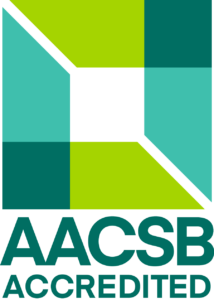Principles of Economics 2
- Credits: 6
- Ending: Examination
- Range: 2P + 2C
- Semester: summer
- Year: 1
- Faculty of Economics and Finance
Teachers
Included in study programs
Teaching results
Výsledky vzdelávania:
Teaching results:
The aim of the course is to introduce the students to the principles of macroeconomics and functioning of the economy as a whole. The students will be able to understand the basic macroeconomic indicators and the mutual interactions between them. The students learn how the macroeconomic equilibrium is being formed and what are the causes and consequences of macroeconomic disequilibrium. The course focuses on the economic role of the state, macroeconomic policies, the basic models of a closed and open economy and the international economic relations.
Knowledge:
Completion of the course enables students to master the basic macroeconomic concepts and understand macroeconomic context. The students will be able to systematize the knowledge of macroeconomics in relation to the courses such as economic policy, public finance, social policy and public administration.
Competences:
The students will gain the ability to think like the economist and understand macroeconomic concepts, indicators, policies and issues and apply knowledge of macroeconomics to events in the economy.
Skills:
The students get the ability to search, process and analyze macroeconomic data gained from relevant resources and evaluate macroeconomic development. In tutorial, students are expected to work not only individually but also in teams. The students learn how to discuss and present their arguments.
Indicative content
Gross domestic product. Alternative approaches to measurement of economic performance. Agreggate demand and aggregate supply. Model AD-AS.
Consumption, savings and investment.
Economy in long-run: economic growth.
Economy in short-run: economic cycle.
Money, money market and banking system.
Inflation.
Unemployment and Phillips curve.
Macroeconomic approaches to economic policy.
Fiscal policy.
Monetary policy.
International trade. International flows goods, servises and capital.
Exchange rate mechanism and international monetary relations.
International economic integration.
Support literature
Odporúčaná literatúra:
Compulsory literature:
1. Parkin, M.: Economics. 13th edition. Harlow: Pearson Education, 2018.
2. Mankiw, G.M.: Principles of Economics. 8th edition. Boston: Cengage Learning, 2017.
Suggested reading:
1. Krugman, P. – Wells, R.: Economics. 6th edition, Worth Publishers, 2021.
2. Acemoglu, D. – Laibson, D. – List, J.A.: Macroeconomics. Global edition, Pearson 2016
2. The Core Team: Economy, Society and Public policy. www.core-econ.org
Requirements to complete the course
Requirements to complete the course: individual work, written test, written exam Seminars 40 %, of which:
Home assignment 12 %
Elaboration and presentation of a case study 5 % Short written tests 3 %
Mid-written exams 20 %
Result of the final written exam 60 %
Student workload
Total student workload: 156 hours. Of which:
Attendance at lectures: 26 hours Attendance at seminars: 26 hours Preparation for seminars: 13 hours
Elaboration of a case study in the form of team cooperation: 18 hours Preparation for written tests of quantitative and graphical tasks: 21 hours Preparation for the exam: 52 hours
Language whose command is required to complete the course
slovak
Date of approval: 11.03.2024
Date of the latest change: 12.06.2025

